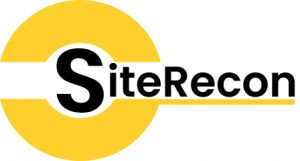
Is That An Organizational Chart Or A Plate Of Spaghetti?
Steven Cesare, Ph.D.
A business owner from Massachusetts called me the other day to talk about organizational communication, clarifying roles and responsibilities, and trying to instill a modicum of accountability into his company operations. The degree of disorganization, underscored by the immature aversion to being too corporate, was now, predictably, reaching critical mass.
I’m thinking of a word that rhymes with organizational chart…
Uh, organizational chart?
You win the luggage!
Upon request, the business owner sent a copy of what some primordial cultures would loosely define as an organizational chart to me. This document had a lot of solid lines and dotted lines, arrows, and even more squiggly lines on it. No wonder there is confusion in the company. Did I mention the number and different line formats on the organizational chart yet?
I’ll take the plate of spaghetti next time. Extra marinara, please!
While there are five standard types of organizational charts (e.g., functional, geographical, product, process, or matrix), most landscapers operate with a functional structure, specifying work responsibilities, reporting relationships, and decision-making authority based on the type of work (i.e., maintenance, construction, trees, irrigation, administrative) being performed. As I explained that basic outline to the business owner, I also reminded him of some guidelines to simplify how his organizational chart should be constructed.
- Most basic organizational charts have the owner listed at the top, with four standard boxes on the next lower level, reporting directly to the owner (e.g., field operations, sales, HR/administration, accounting).
- Obviously with smaller companies, these boxes may by consolidated, though the functional mindset should be preserved when considering future growth.
- Each box on the organizational chart should contain the employee’s first and last name and job title.
- The job titles on the organizational chart should be identical to the job descriptions and the titles found within the payroll system.
- No employee name should be on the organizational chart more than one time; only in one place.
- If a position is vacant, do not put the supervisor’s name in that box; simply put “Position Vacant”.
- The hierarchical order of the boxes should be linked by a solid vertical line to that superior position who would conduct a performance review on that lower position.
- No position can have more than one supervisor, ever; it is called the “unity of command.”
- My professional preference is to always have a current organizational chart in place, and have it updated on the first day of every month.
- My professional preference is to always have another organizational chart with an anticipated date of 18 months into the future, and have it updated on the first day of every month.
- In much the same way, companies should always have a rolling 18-month budget forecast in place to chart anticipated financial growth, so too should they have a rolling 18-month organizational chart in place to anticipate future staffing needs, career ladders, and succession planning
- As I explained to the business owner, never look at a Profit and Loss Statement without the organizational chart, and never look at an organizational chart without a Profit and Loss Statement.
Organizational charts are not meant to be corporate, inflexible, or academic; those adjectives actually define the interpretation, not the information. They are meant to simplify how the pieces of the company fit together while minimizing redundancy, overload, and miscommunication vis-à-vis the chain of command, eventually leading to standard operating procedures, and increased resource efficiency.
Check Out Harvester Steve Cesare’s
NEW OFFERING!
Harvest Group Partners
Click the icon below to download the Harvest Group Mobile app!
What do you want to learn more about?
The Harvesters want to know what topics you would like to see us discuss. Click below to submit your ideas!





